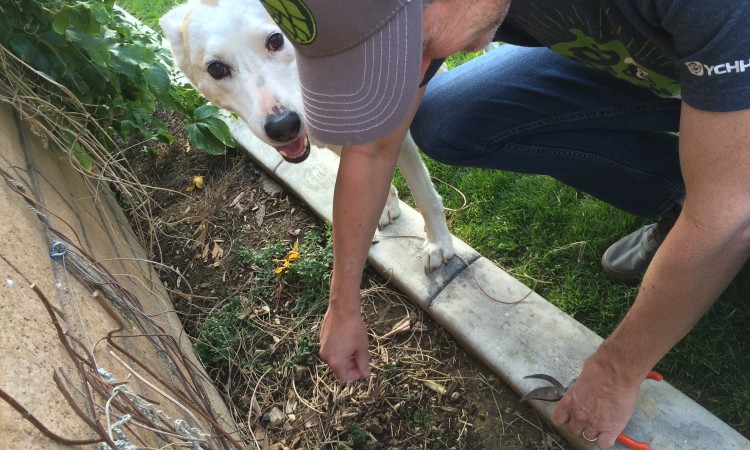I was checking out my hop garden for signs of life this evening and sure enough this year’s crop is starting to peek out from the ground. It’s hard to believe it was five years ago when I first took the plunge into growing my own hops. In hindsight, I wish I would have done it years before. It was this step which truly made me appreciate the magical thing that hops are. It also directly led to my epiphany that hops could be brewed and enjoyed as a refreshing sparkling hop water.
So you want to grow your own hops? I say go for it. Its March and now is the time that home brewer suppliers and hop farmers are offering hop rhizomes to the public at large. They simply ship the live root like clippings direct to your home. Check out the many sources by searching online for “hop rhizomes.”
With regard to climate, I was very concerned that I was wasting my time because I live in Yorba Linda, California, which is located in So Cal between the Mojave Desert and the coast. The climate is pretty different than the areas in Oregon, Washington and Idaho, where the best commercial hop farmers in the West cultivate. Because the reward was so big, I plunged ahead anyway and hedged my bet by purchasing two of every variety I could find, hoping that one would be hearty enough to survive. I labeled stakes by variety and the one that initially did the best here was the Columbus hop; a fitting hop for what I consider a discovery. I have since had success with other hops and have met other small commercial operators here who have impressively been able to grow a wide variety of hops in Southern California.
While there are entire books on hop cultivation, I can assure you that the planting is very easy. Tending to what eventually comes out of the ground may present some challenges however, so choose your location wisely. Hops can grow an impressive 12” a day at their peak season and reach up to 25 feet. You can almost watch them grow. Many home hop farmers, especially those with 2 story homes, choose a location near their house, so they can string twine from the rooftop. This is easier than devising a standalone system, but there are many ways to string a hop. For most varieties, the peak harvest occurs in August and then they go dormant and you cut back the plant to near the ground. As my new hops peak out from the soil as they did today, I usually trim back the dead wood some more and move the mulch out of the way.
All the details of planting and caring for your hops goes beyond the scope of this post, so check out You Tube and other online resources. It’s easier than you might think and very rewarding. Even if you are not a brewer, I am sure your neighborhood has some who would jump at the chance to make use of your bounty. Hops are beautiful and majestic plants to look at and picking and enjoying that aroma will enhance your knowledge of beer and bring back a wave of memories of a well hopped beer. What could be more enjoyable than enjoying a home brew, craft beer or craft hop water in the shade of your own hop plants? You might even pick a hop and plop it in your drink as a garnish.
Cheers!
Paul Tecker
Founder & Brewer
H2OPS Sparkling Hop Water



